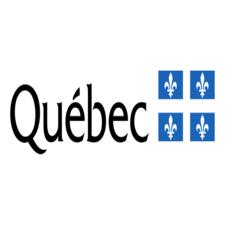Analysis of change between the mapping of heat/fresh islands 2013-2014 and 2020-2022
Maps of the analysis of change between * [mapping of heat/freshness islands 2020-2022] (https://www.donneesquebec.ca/recherche/dataset/ilots-de-chaleur-fraicheur-urbains-et-ecarts-de-temperature-relatifs-2020-2022) * and * [mapping of heat/freshness islands using 2013-2014 data] (https://www.donneesquebec.ca/recherche/dataset/ilots-de-chaleur-fraicheur-urbains-et-ecarts-de-temperature-relatifs-2013-2014) * across all major urban centers by two methods, i.e.
- The map of the __Difference between temperature differences in °C (* [2020-2022] (* 2020-2022] (https://www.donneesquebec.ca/recherche/dataset/ilots-de-chaleur-fraicheur-urbains-et-ecarts-de-temperature-relatifs-2020-2022) * minus * [2013-2014] (https://www.donneesquebec.ca/recherche/dataset/ilots-de-chaleur-fraicheur-urbains-et-ecarts-de-temperature-relatifs-2013-2014)*)__), which is calculated at the pixel level and produced at the scale of the ecumene of Quebec (2016 census, 167,764 km2). The temperature difference is the difference in temperature in the city compared to a nearby wooded area. A positive value of the difference in temperature differences represents an increase in the temperature difference in 2020-2022 compared to 2013-2014, a negative value represents a decrease in the temperature difference in 2020-2022 compared to 2013-2014.
- The map of __Change in the SUHII Index between 2020-2022 and 2013-2014 (%) __, which represents the percentage of change in the *Surface Urban Heat Island Intensity* (SUHII) Index between the two years. This map covers the extent of * [2021 census population centers] (https://www150.statcan.gc.ca/n1/pub/92-195-x/2021001/geo/pop/pop-fra.htm) * () * (CTRPOP) with at least 1,000 inhabitants and a density of at least 400 inhabitants per km2 to which a 2 km buffer zone is added and the values are calculated at the scale of the * [dissemination island] (https://www150.statcan.gc.ca/n1/pub/92-195-x/2021001/geo/db-id/db-id-fra.htm) * of Statistics Canada. The SUHII index highlights areas with a higher heat island intensity, by calculating a weighted average from the temperature difference classes, giving more weight to the hottest classes. Index change values below 100% represent a decrease in the intensity of UHIs in 2020-2022 compared to 2013-2014. Values greater than 100% represent an increase in UHI intensity between 2013-2014 and 2020-2022. Values around 100% correspond to an absence of change. The temperature difference classes were produced by the k-means algorithm, which takes into account the distribution of temperature difference values in a population center in a given year. The limits of temperature difference classes may therefore differ between the two years, which will influence the variation value of the SUHII index.
For more details on the creation of the various maps as well as their advantages, limitations and potential uses, consult the * [Technote] (https://www.donneesquebec.ca/recherche/dataset/analyse-de-changement-ilots-chaleur-fraicheur-et-indice-intensite-ilots-chaleur-urbains/resource/021c5399-a7b3-4b02-a753-39dda706ab27) * (simplified version) and/or the * [methodological report] ( https://www.donneesquebec.ca/recherche/dataset/analyse-de-changement-ilots-chaleur-fraicheur-et-indice-intensite-ilots-chaleur-urbains/resource/ef7e3450-9347-4051-b3bb-bedcba3c0d92 ) * (full version).
The production of this data was coordinated by the National Institute of Public Health of Quebec (INSPQ) and carried out by the forest remote sensing laboratory of the Center for Forestry Education and Research (CERFO), funded under the * [2013-2020 Climate Change Action Plan] (https://www.environnement.gouv.qc.ca/changementsclimatiques/plan-action.asp) * of the Quebec government entitled Le Québec en action vert 2020.
**This third party metadata element was translated using an automated translation tool (Amazon Translate).**
Simple
- Date ( RI_367 )
- 2023-03-06
- Date ( RI_366 )
- 2023-03-06
- Status
- historicalArchive; archiveHistorique RI_594
- Maintenance and update frequency
- notPlanned; nonPlanifié RI_542
- Keywords ( RI_528 )
-
- Layout
- Change analysis
- Tree
- Cartography
- Chaleur
- Climate change
- Development
- Environment
- Forest
- Freshness
- Geomatics
- ICFU
- ICU
- Island
- Satellite imagery
- Artificial intelligence
- Landsat-8
- public
- Health
- Diagram
- Temperature
- Remote Sensing
- Urbain
- Government of Canada Core Subject Thesaurus Thésaurus des sujets de base du gouvernement du Canada ( RI_528 )
-
- Government information
- Use limitation
- Creative Commons 4.0 Attribution (CC-BY) licence – Quebec (https://www.donneesquebec.ca/fr/licence/)
- Access constraints
- license; licence RI_606
- Use constraints
- license; licence RI_606
- Spatial representation type
- grid; grille RI_636
- Metadata language
- eng; CAN
- Metadata language
- fra; CAN
- Topic category
-
- Geoscientific information
- Begin date
- 2013-04-01
- End date
- 2022-03-31
))
- Reference system identifier
- unknown / unknown / unknown
- Distribution format
-
-
GeoTIF
(
unknown
)
-
HTML
(
unknown
)
-
PDF
(
unknown
)
-
SHP
(
unknown
)
-
XLS
(
unknown
)
-
GeoTIF
(
unknown
)
- OnLine resource
-
Difference between temperature differences in °C (2020-2022 minus 2013-2014)
(
HTTPS
)
Dataset;GeoTIF;fra
- OnLine resource
-
Difference between temperature differences in °C (2020-2022 minus 2013-2014)
(
HTTPS
)
Dataset;HTML;fra
- OnLine resource
-
Change in the SUHII index between 2020-2022 and 2013-2014 (%)
(
HTTPS
)
Dataset;HTML;fra
- OnLine resource
-
INSPQ website, Mapping urban heat islands
(
HTTPS
)
Dataset;HTML;fra
- OnLine resource
-
Original metadata (https://www.donneesquebec.ca)
(
HTTPS
)
Dataset;HTML;fra
- OnLine resource
-
Technote - Maps of urban heat and freshness islands: keys to interpreting and using them
(
HTTPS
)
Supporting Document;PDF;fra
- OnLine resource
-
Methodological report
(
HTTPS
)
Supporting Document;PDF;fra
- OnLine resource
-
Article on the ICU ratio index (IRICU - Surface Urban Heat Island Ratio Index (SUHRI))
(
HTTPS
)
Supporting Document;PDF;fra
- OnLine resource
-
SUHII index 2013-2014, 2020-2022 and change in the SUHII index between 2020-2022 and 2013-2014 (%)
(
HTTPS
)
Dataset;SHP;fra
- OnLine resource
-
Proposed symbology for representing data
(
HTTPS
)
Dataset;XLS;fra
- File identifier
- 5644a516-92f7-4d06-aff7-3dfc606f70f0 XML
- Metadata language
- eng; CAN
- Character set
- utf8; utf8 RI_458
- Hierarchy level
- dataset; jeuDonnées RI_622
- Date stamp
- 2025-11-25
- Metadata standard name
- North American Profile of ISO 19115:2003 - Geographic information - Metadata
- Metadata standard version
- HNAP ISO:19115 - 2003
Overviews

Spatial extent
))
Provided by

 Arctic SDI catalogue
Arctic SDI catalogue